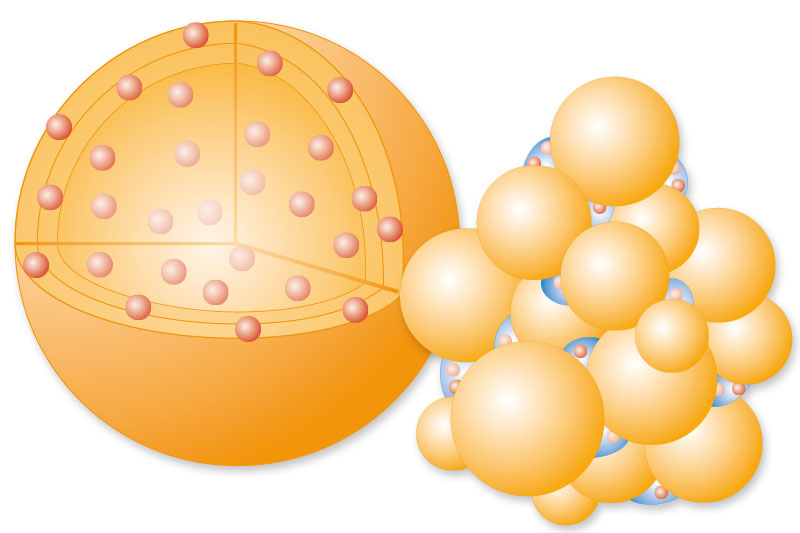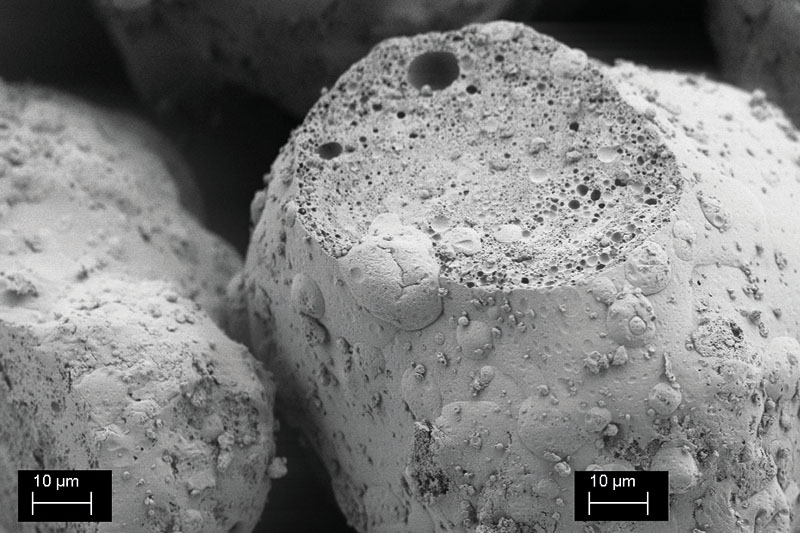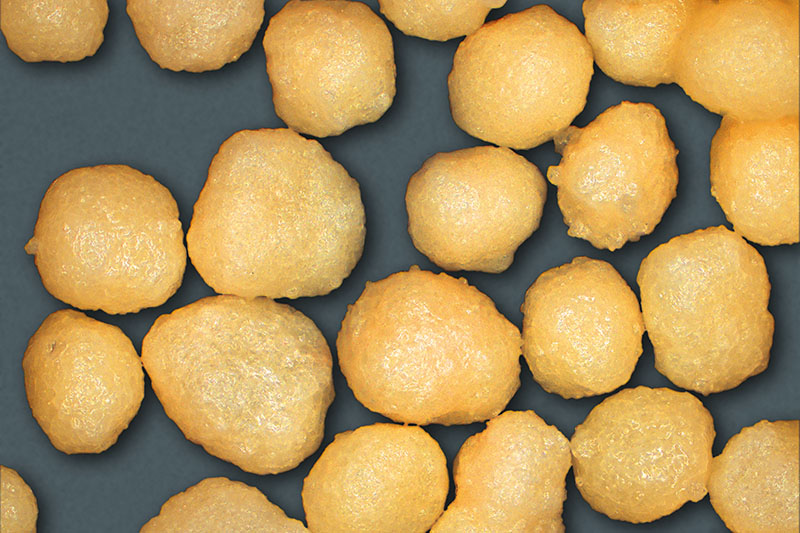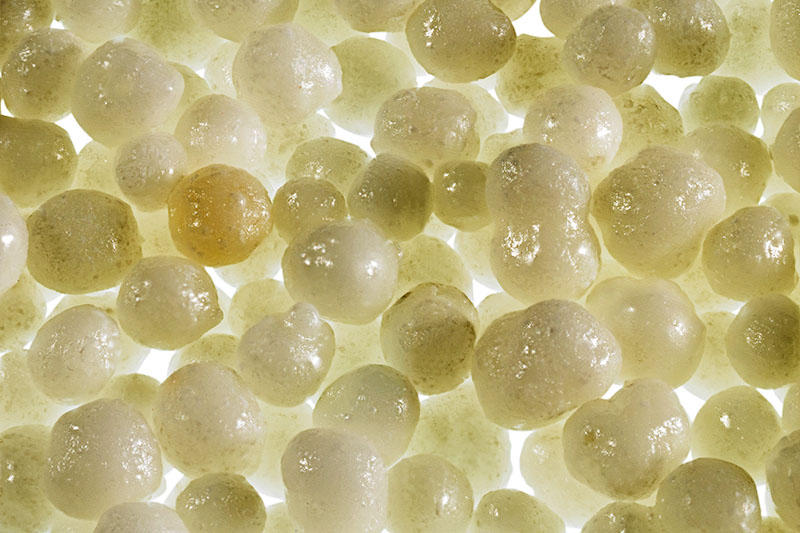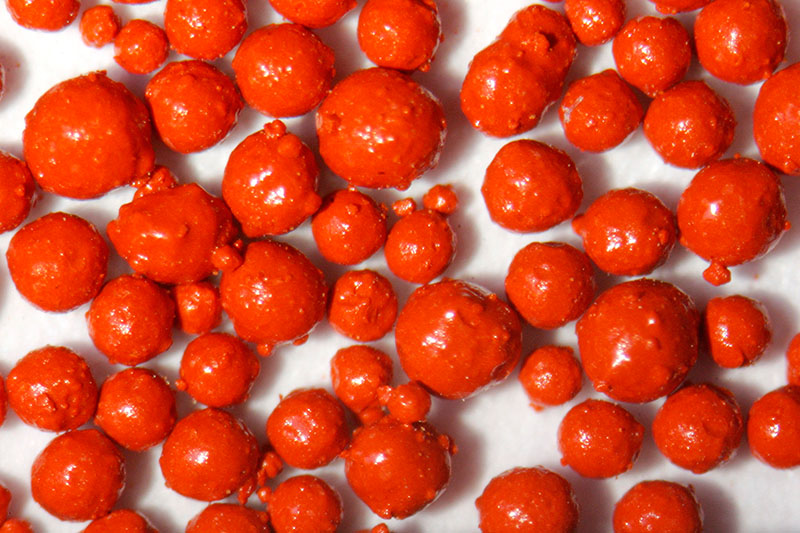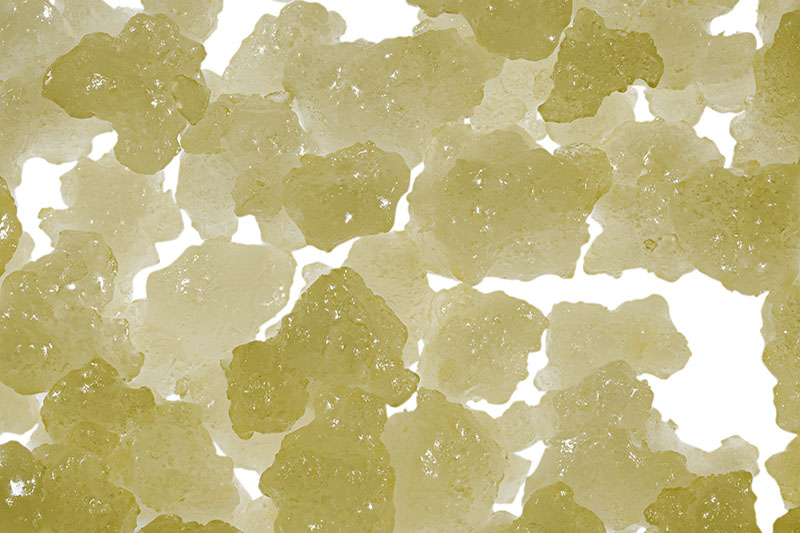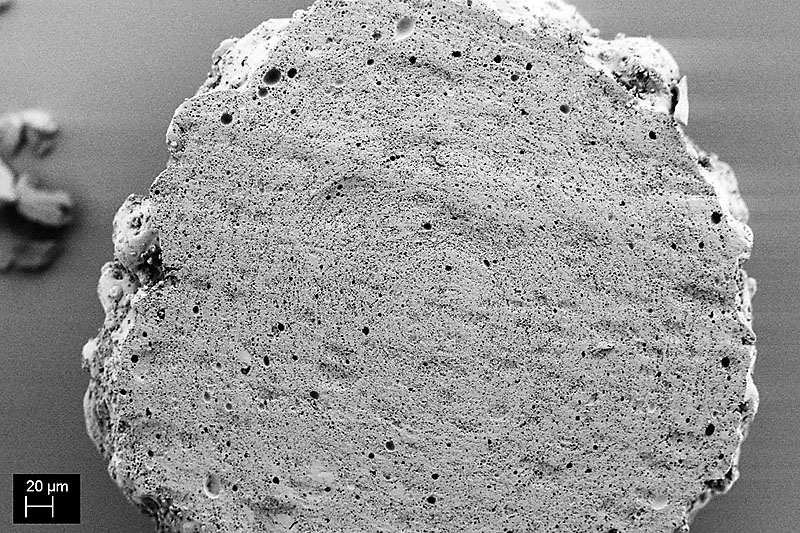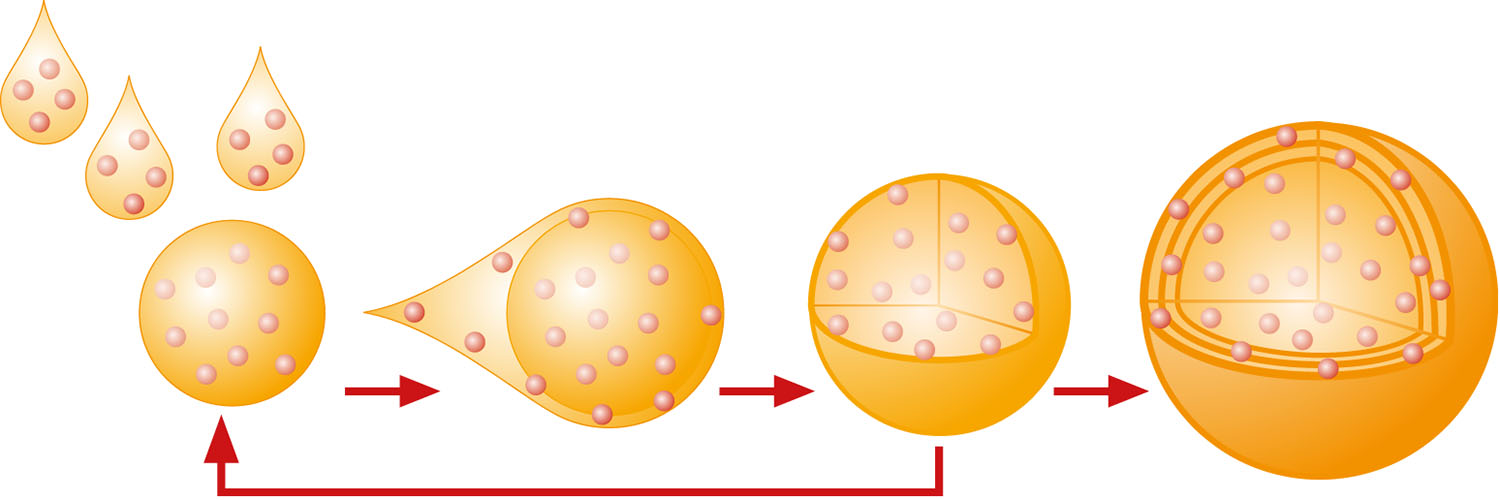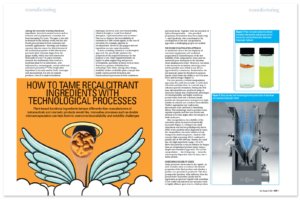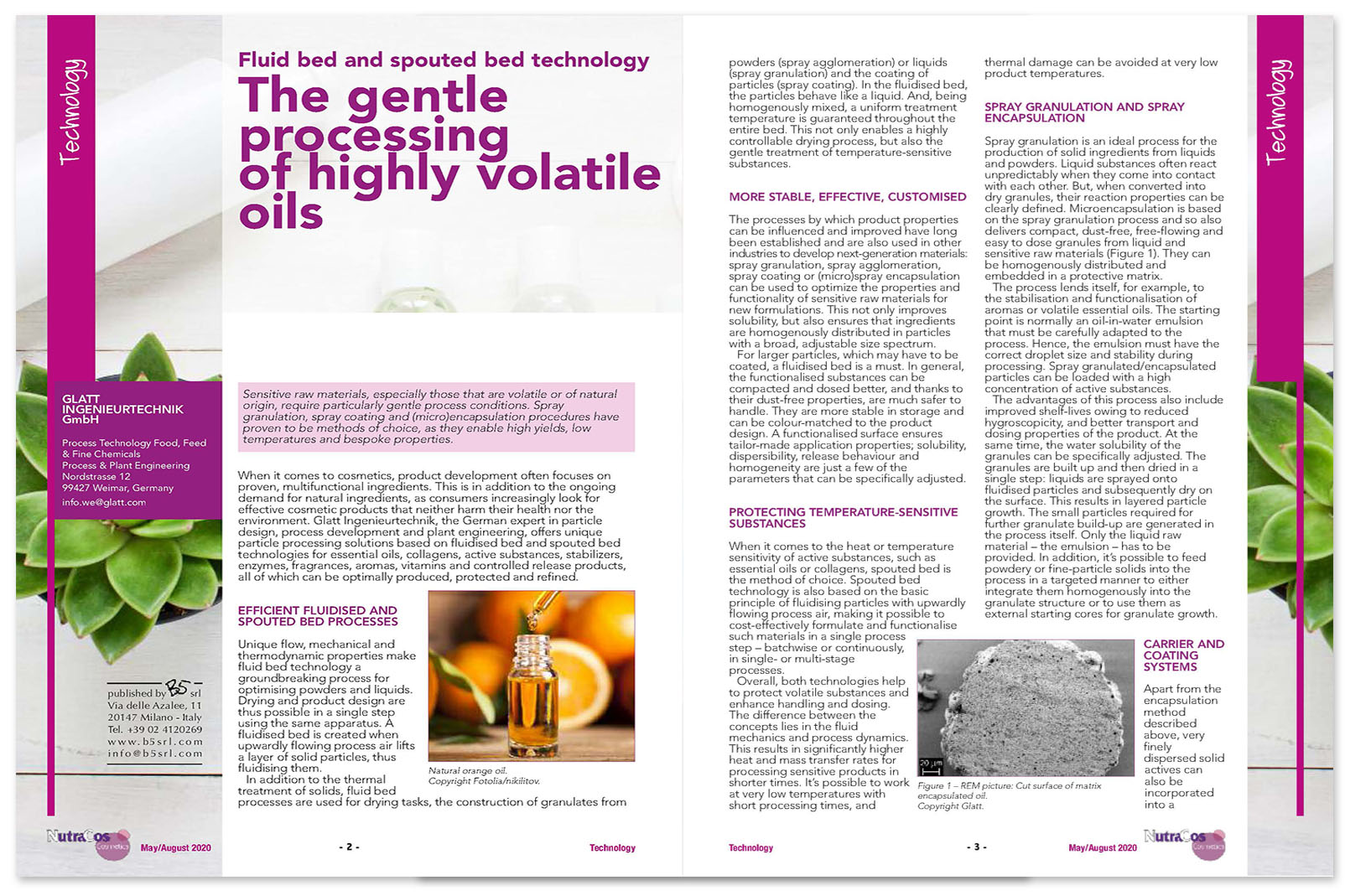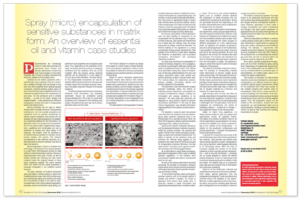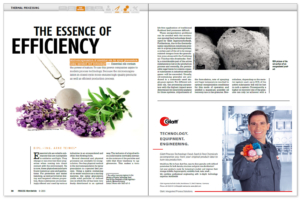Micro-encapsulation
Encapsulation from the liquid.
Combination of drying, granulation and release control in one step.
Protection of sensitive ingredients.
Safe embedding of volatile substances.
Microcapsules in solid matrix for perfect enclosure and protection of sensitive substances
Valuable substances that require special protection are often present in powder or even liquid form. This encapsulation process is used in particular for products and ingredients for the food industry. These include probiotics or essential oils, fragrances and flavors, for example. Micro-encapsulation in the fluid bed or spouted bed allows these substances to be embedded in matrix pellets, thus combining drying, granule formation and release control in a single step. The substances to be protected are emulsified and then gently granulated on the basis of spray granulation and thereby embedded homogeneously distributed in a compact protective matrix.
In the field of micro-encapsulation, Glatt has conducted various case studies on formulation and process optimization strategies based on encapsulation efficiency. Depending on the preferred principle, based on the properties of the customer’s active ingredients to be encapsulated, a wide range of available technical equipment can be customized in terms of cost, efficiency and formulation properties. In water-based matrix encapsulation, we focus on the solidification conditions as well as the crystallization behavior in lipid-based encapsulation, adapted to the particular material system for particle formation in fluid bed or spouted bed spray granulation processes.
The micro-encapsulation process is carried out in fluid bed and spouted bed systems, preferably in continuous operation.

